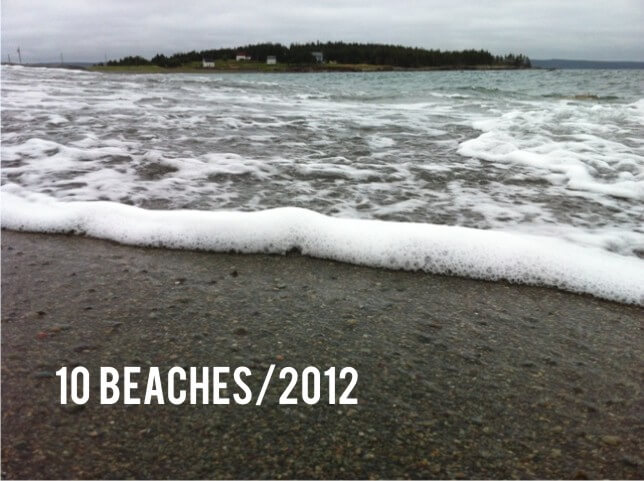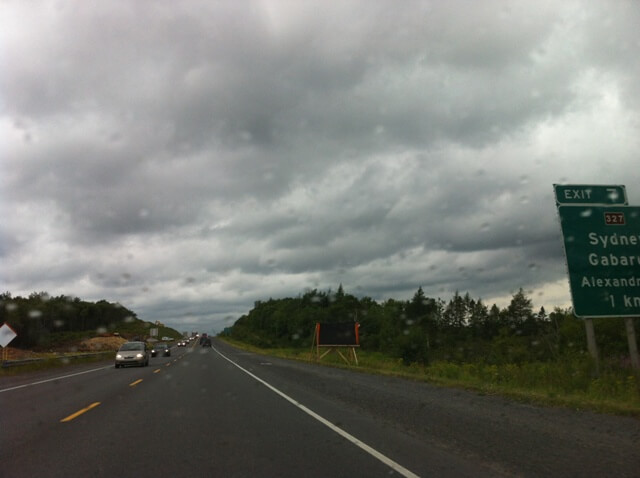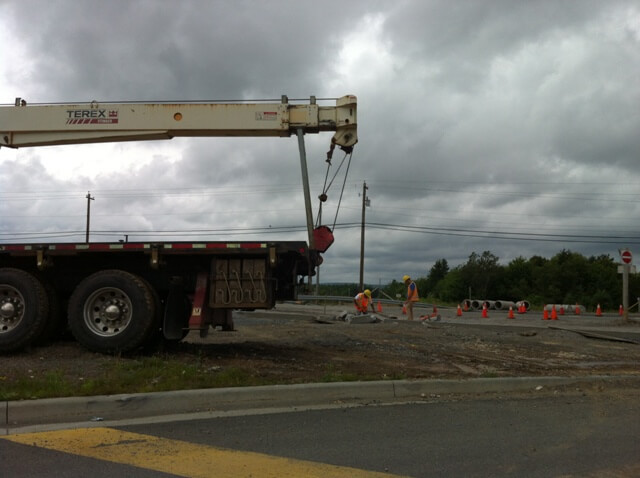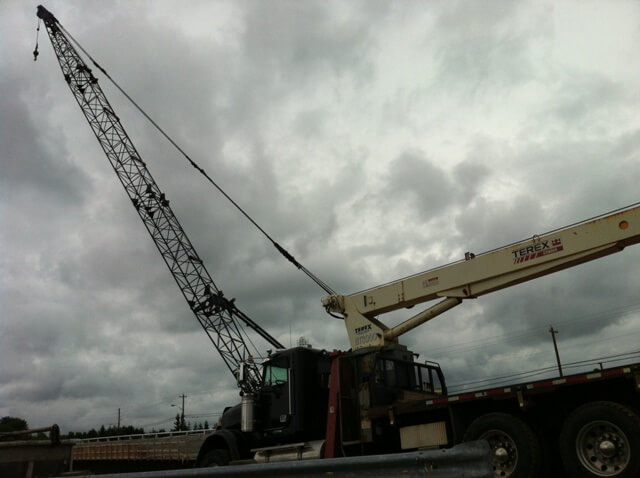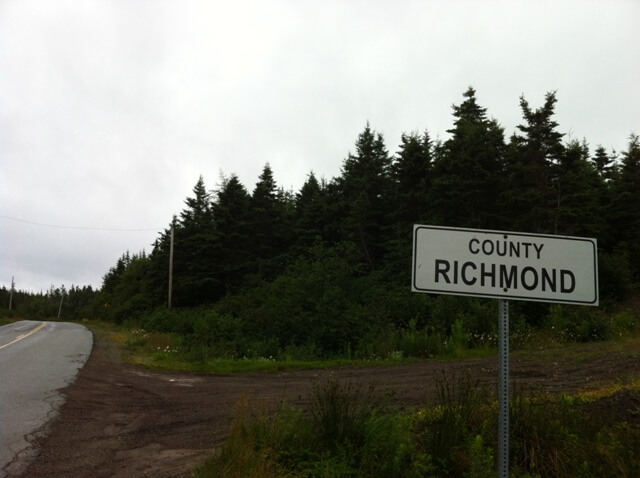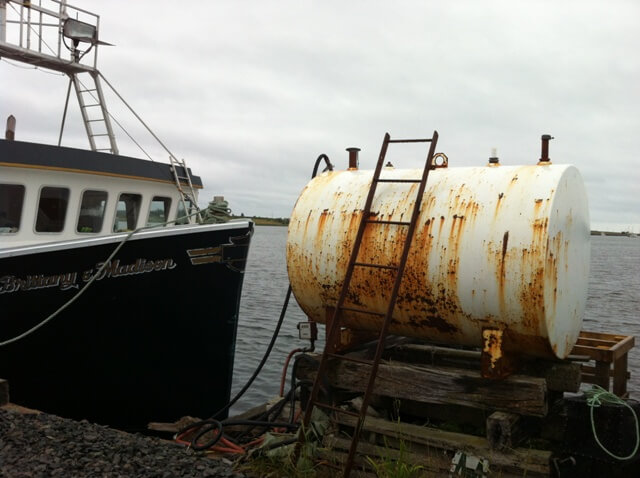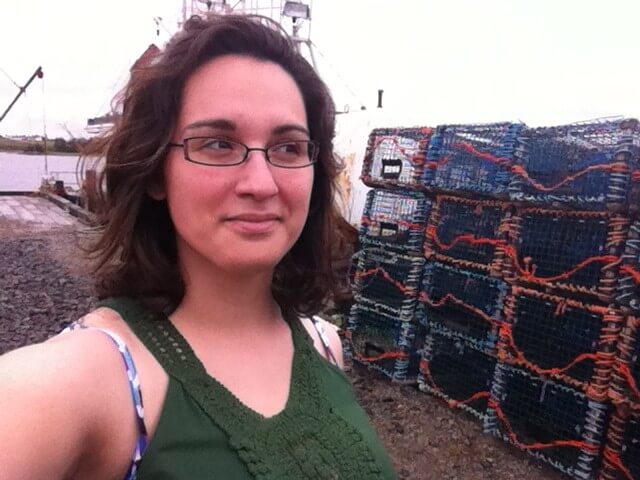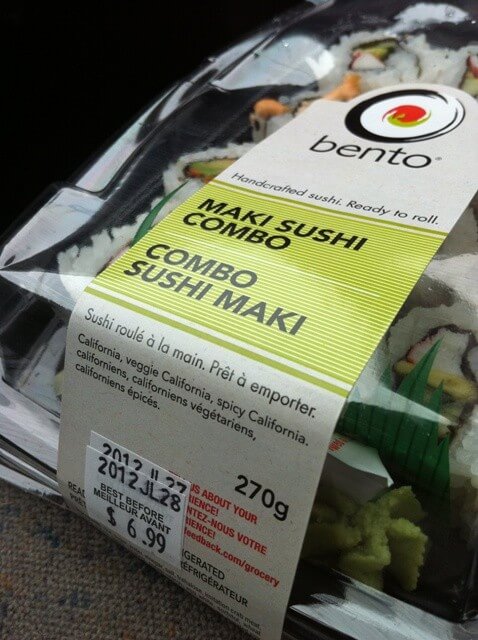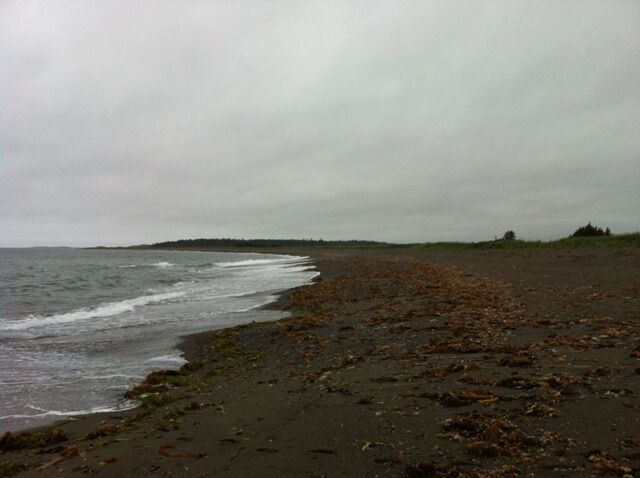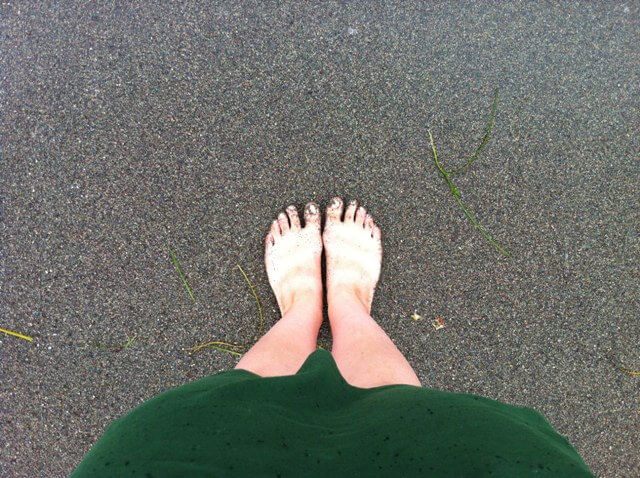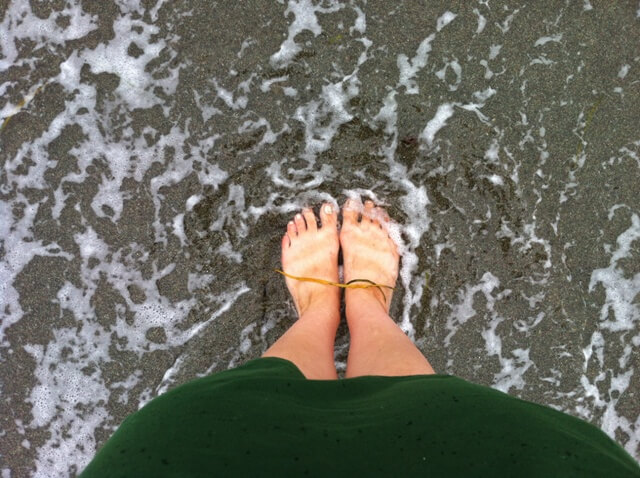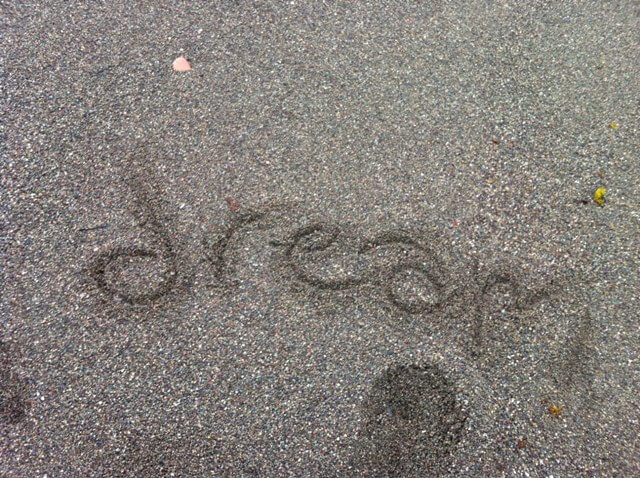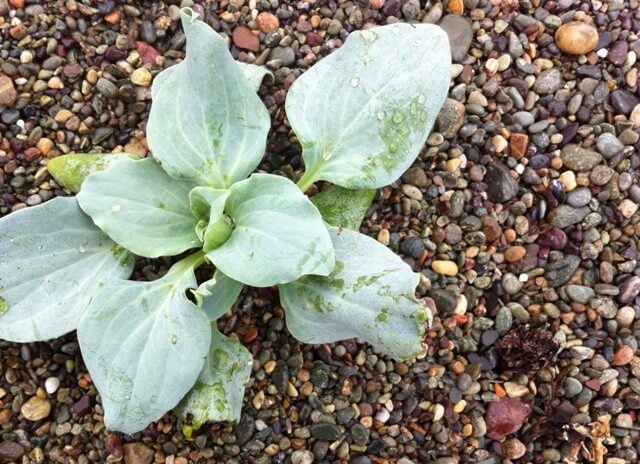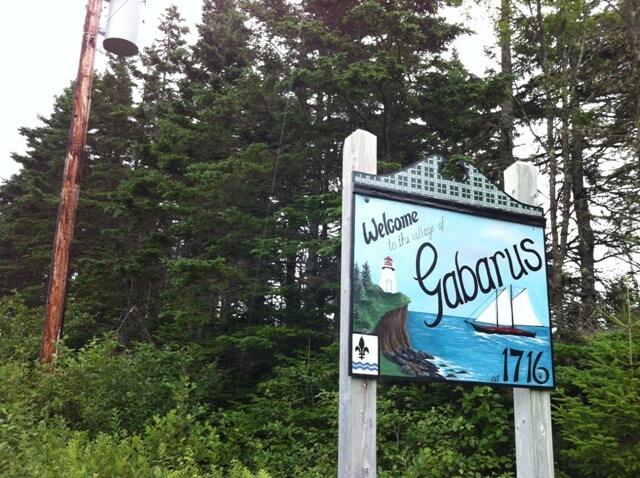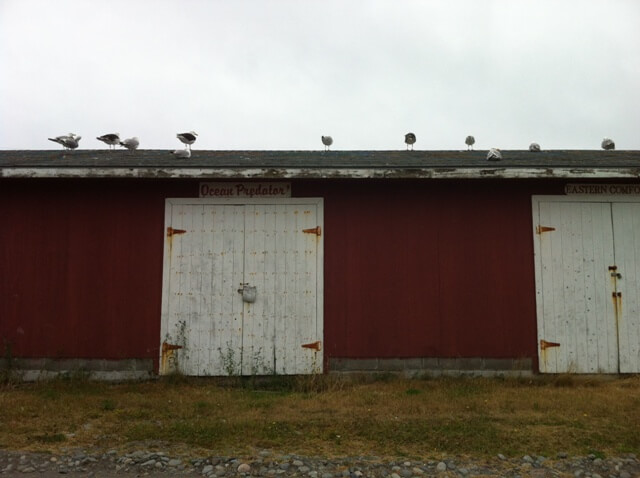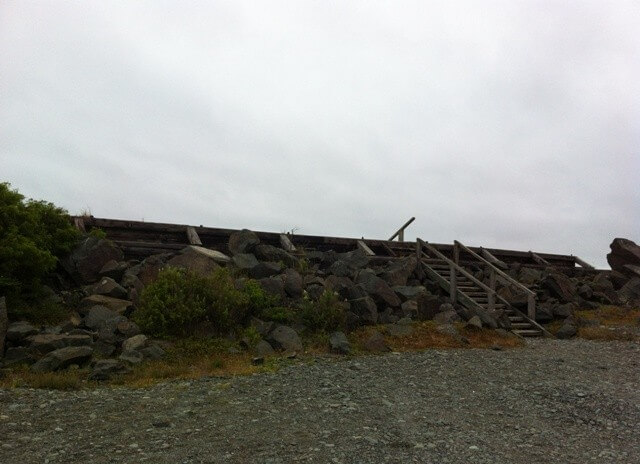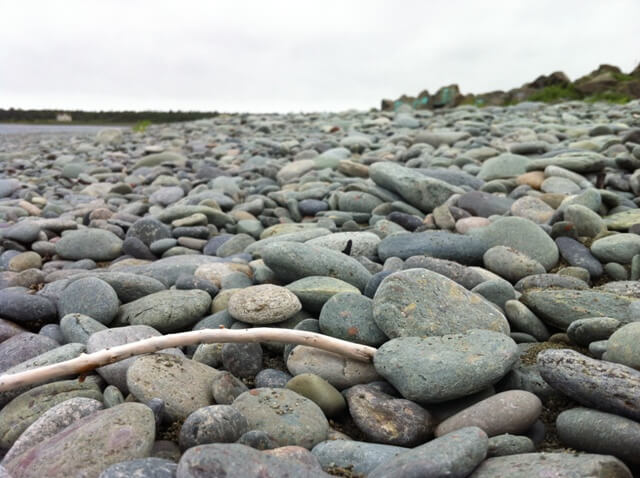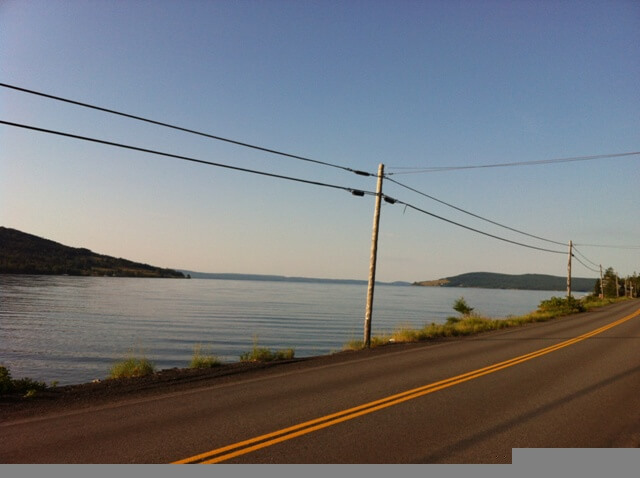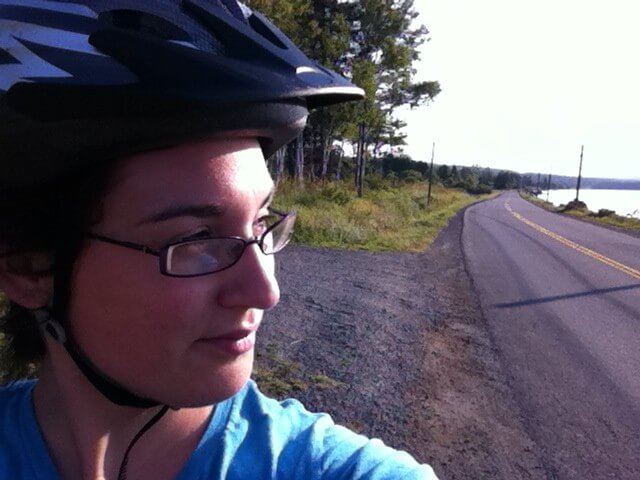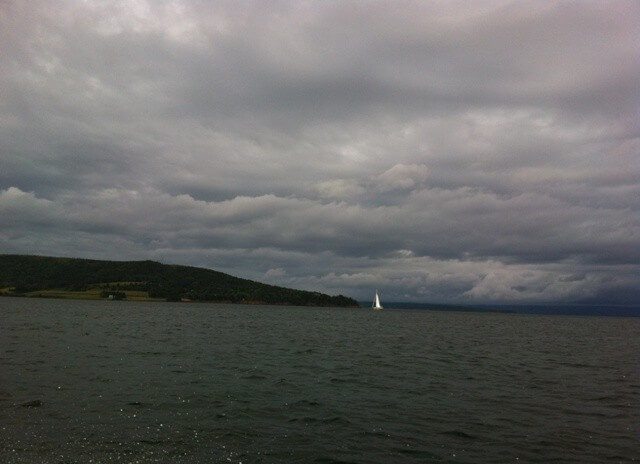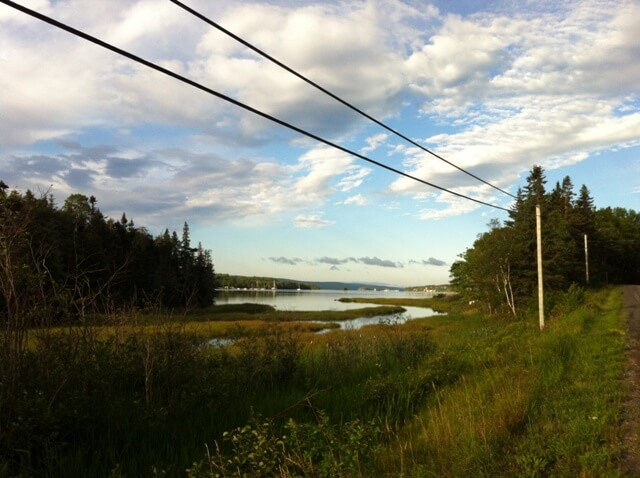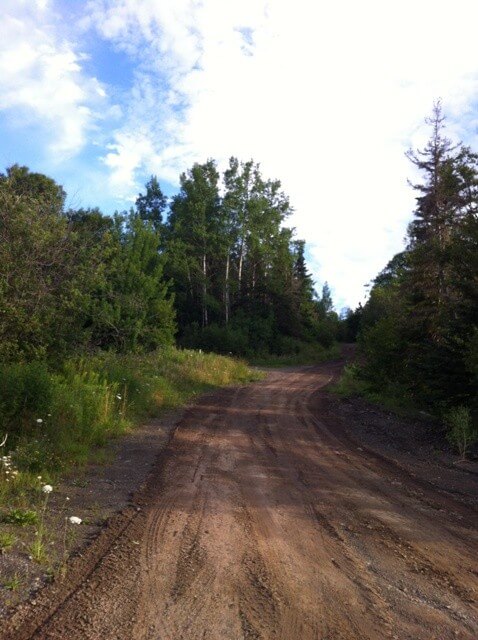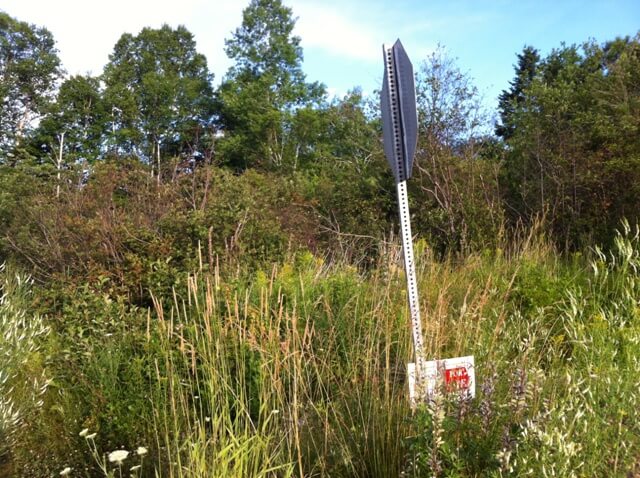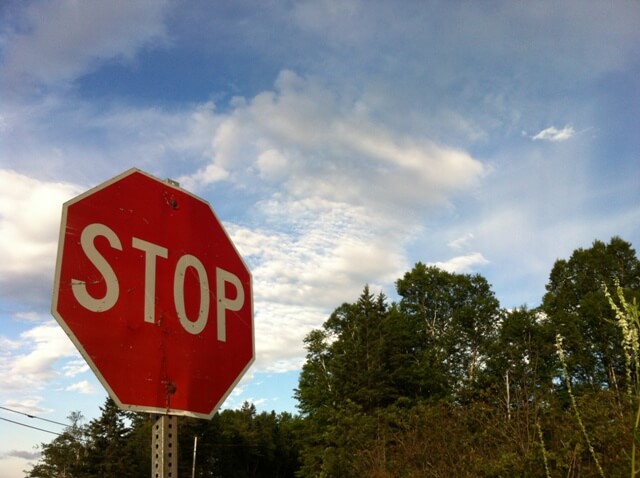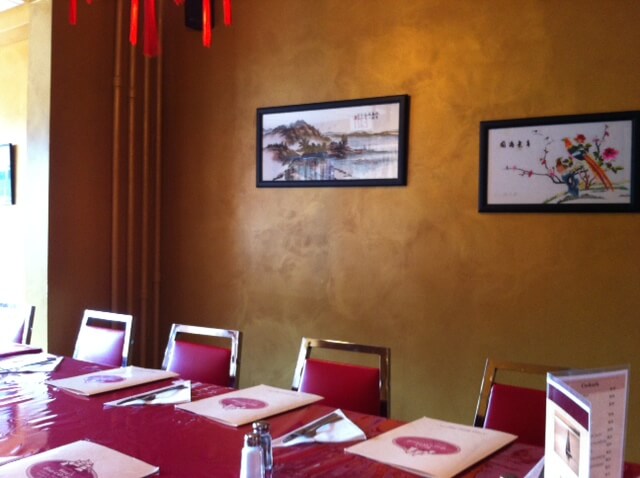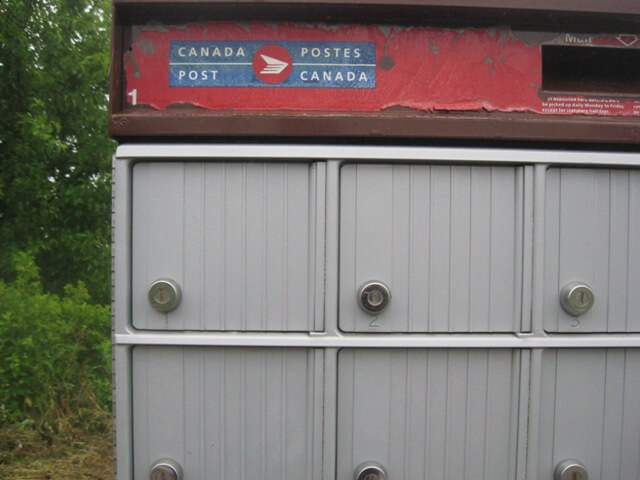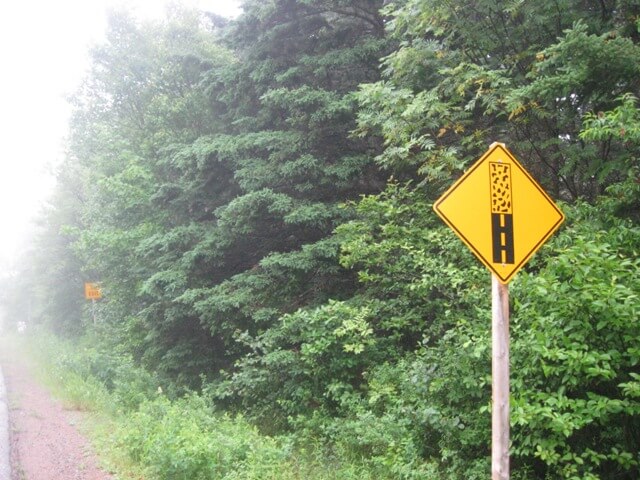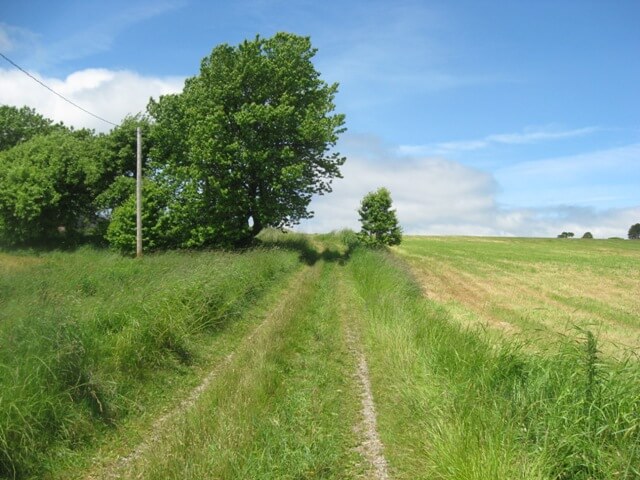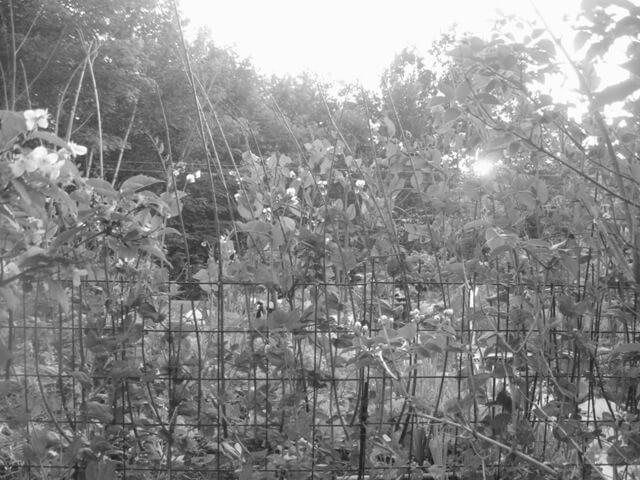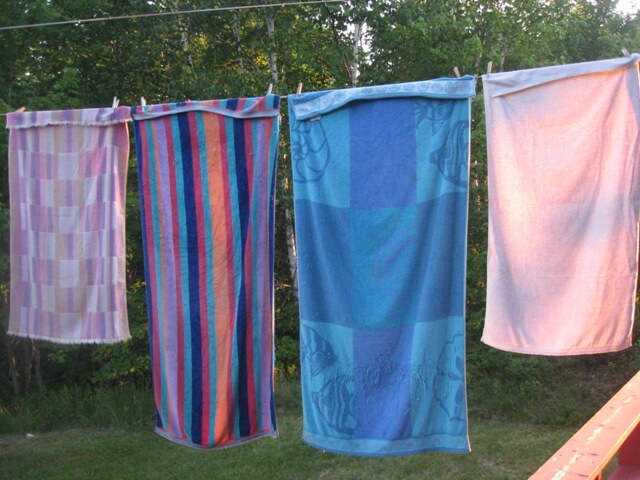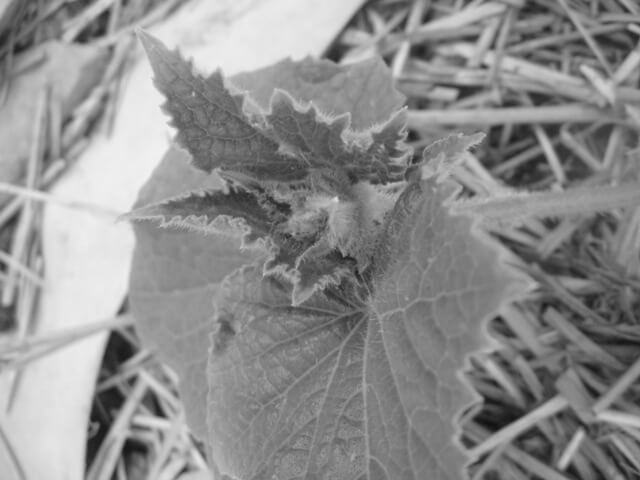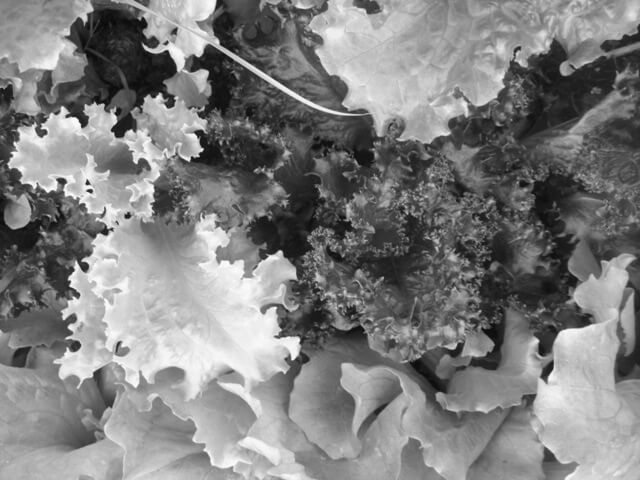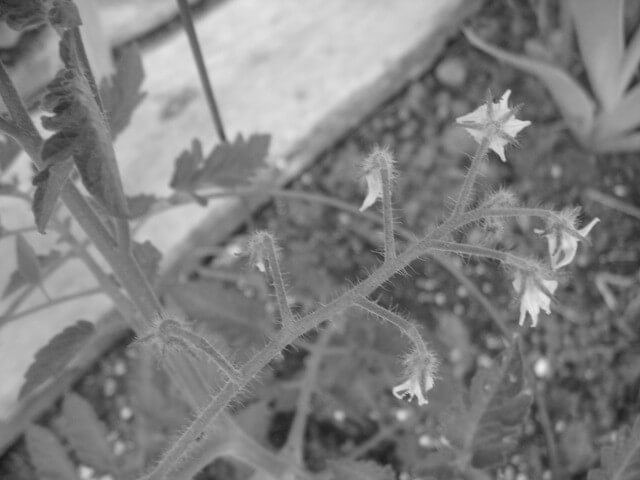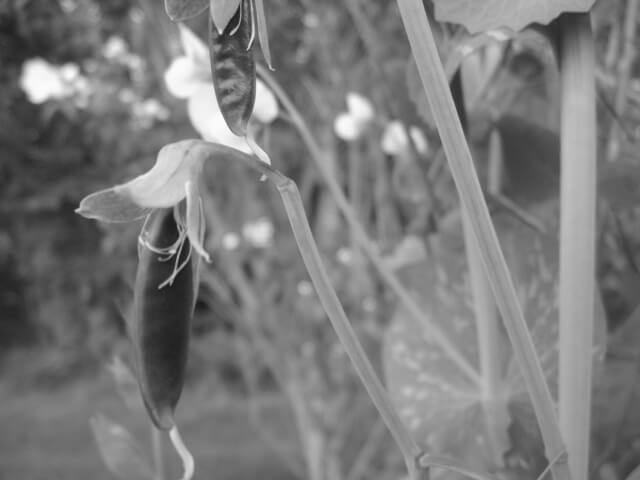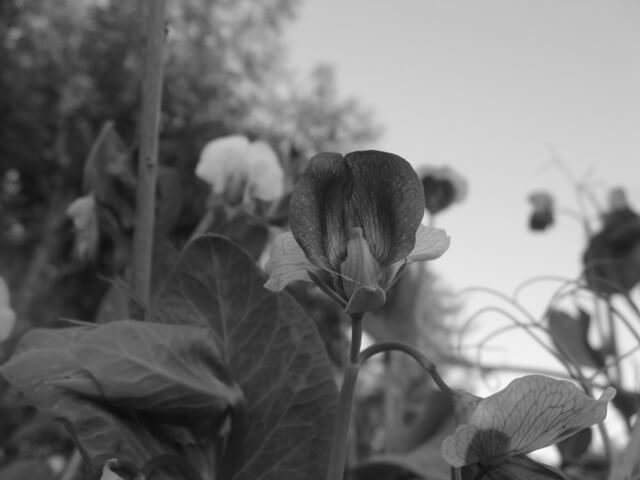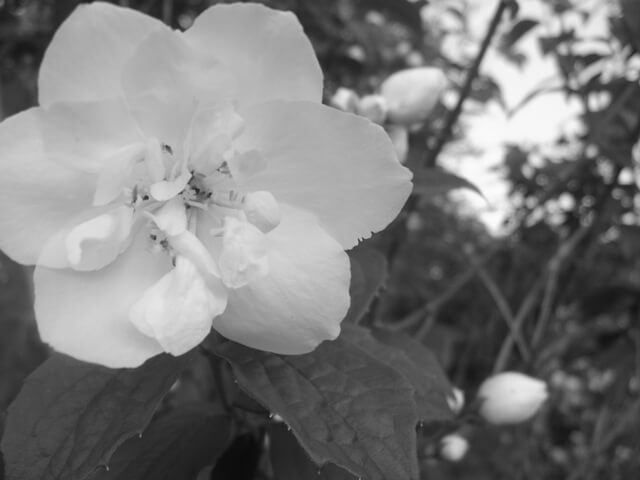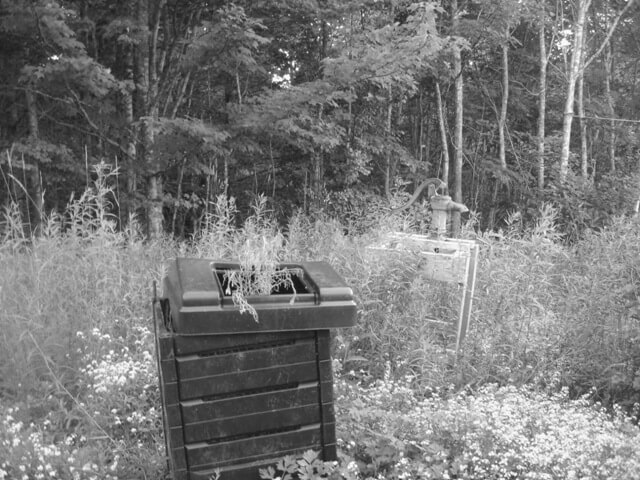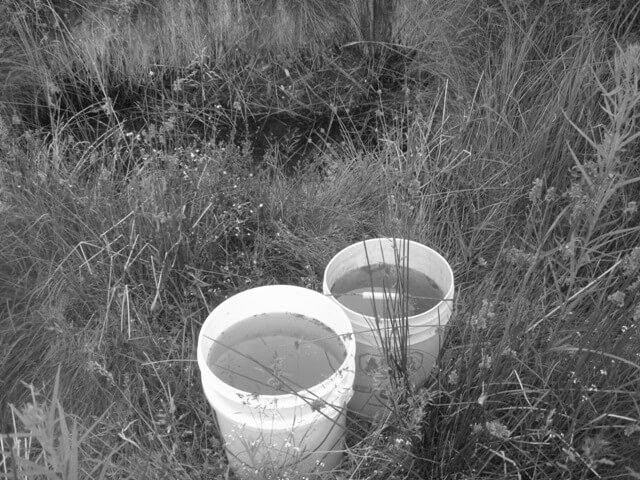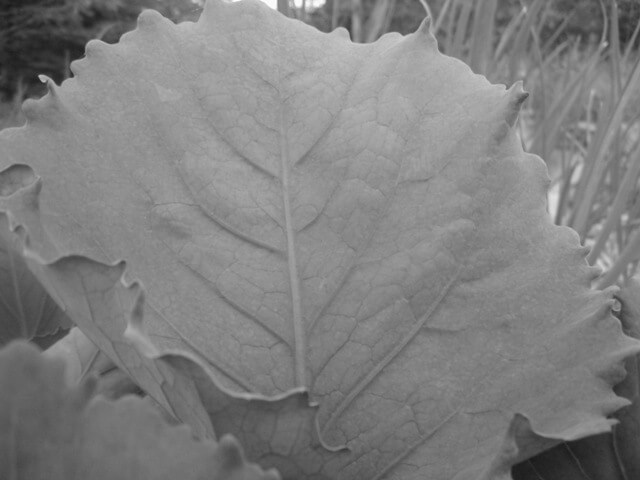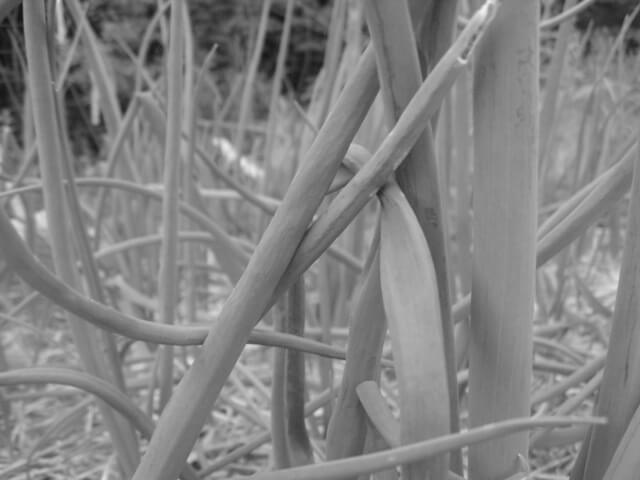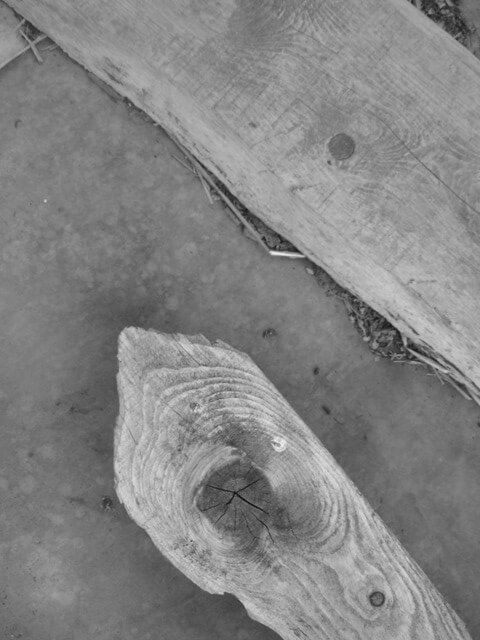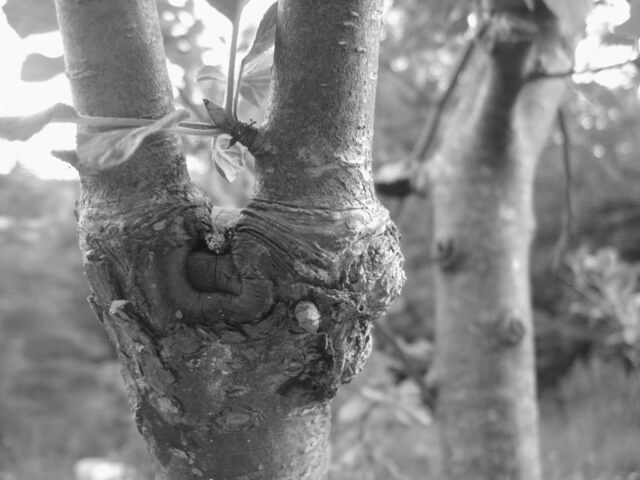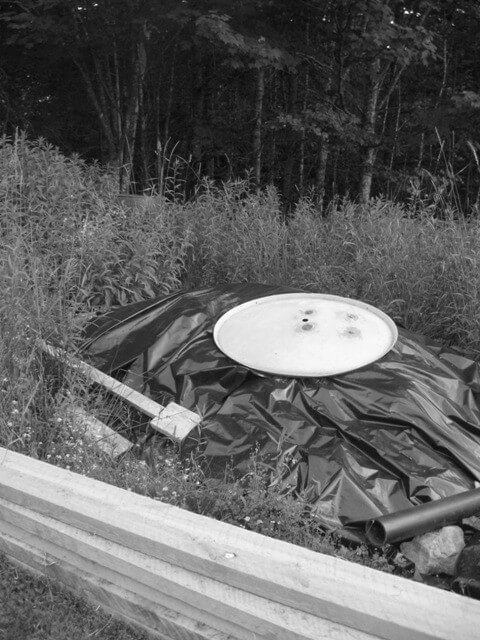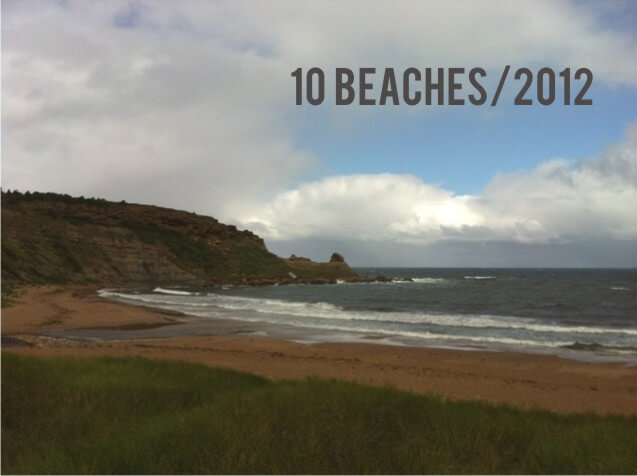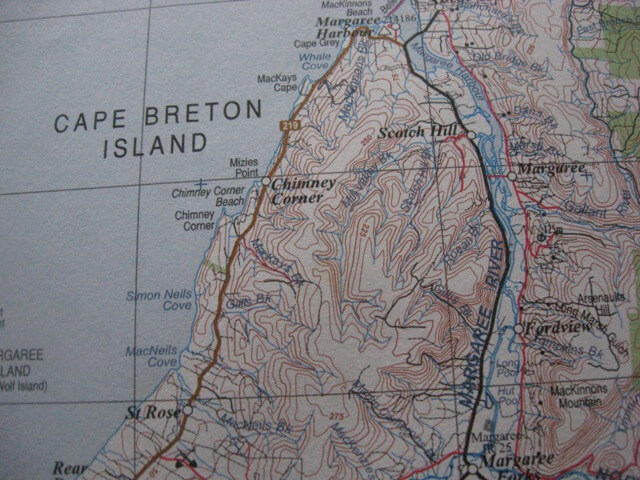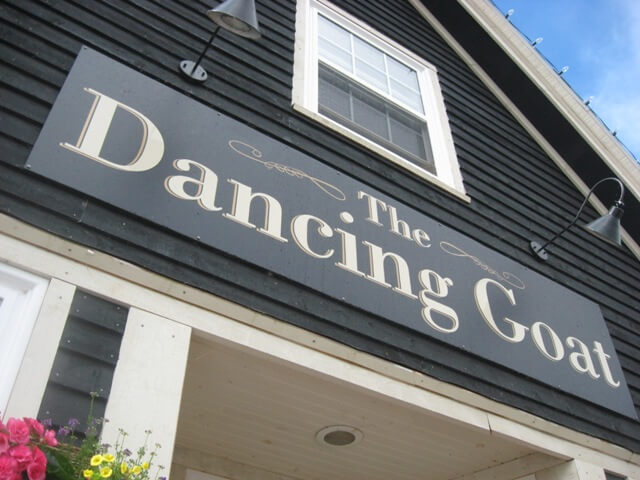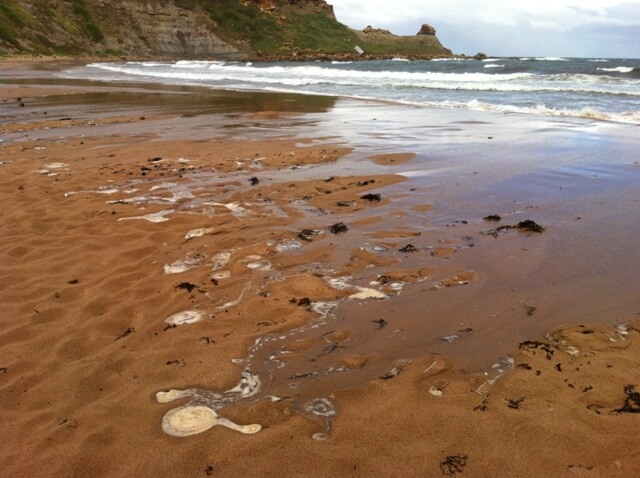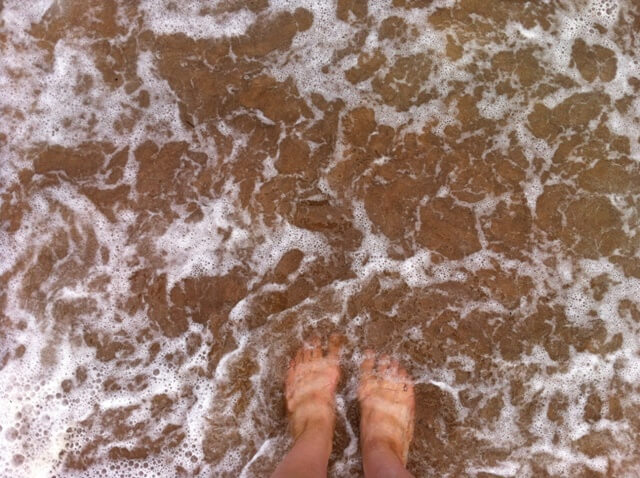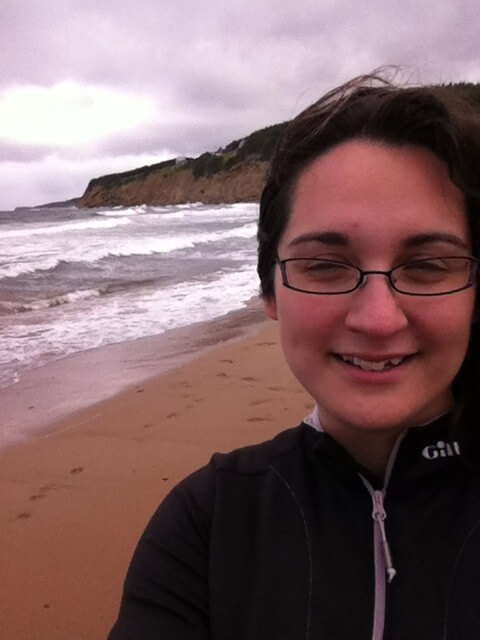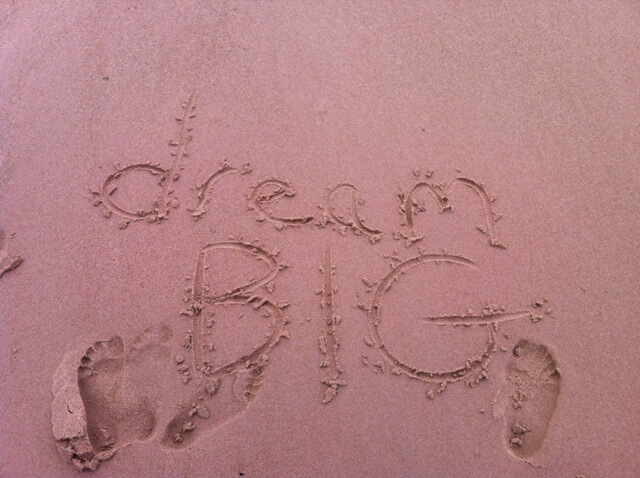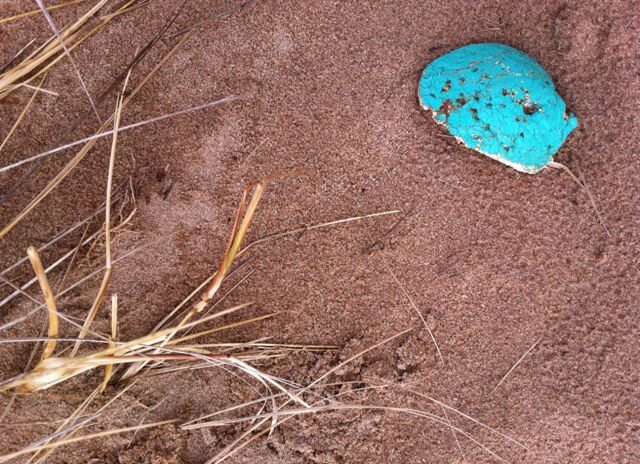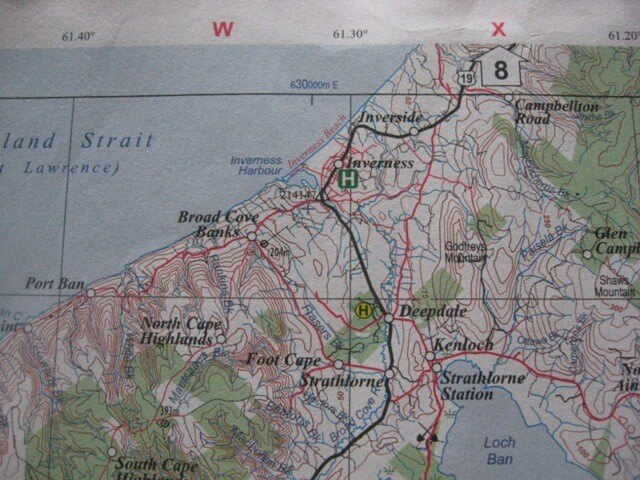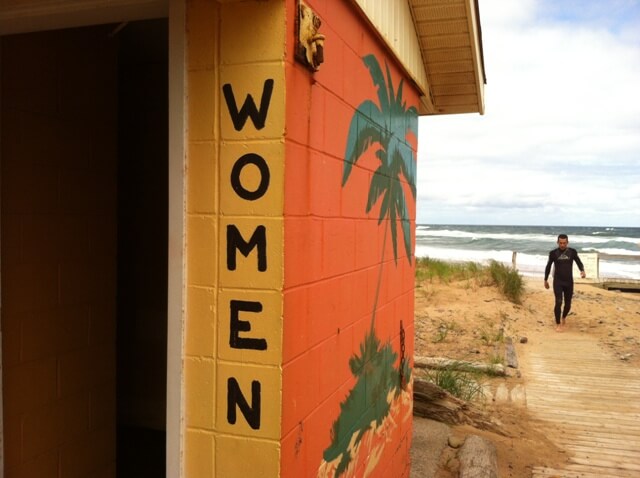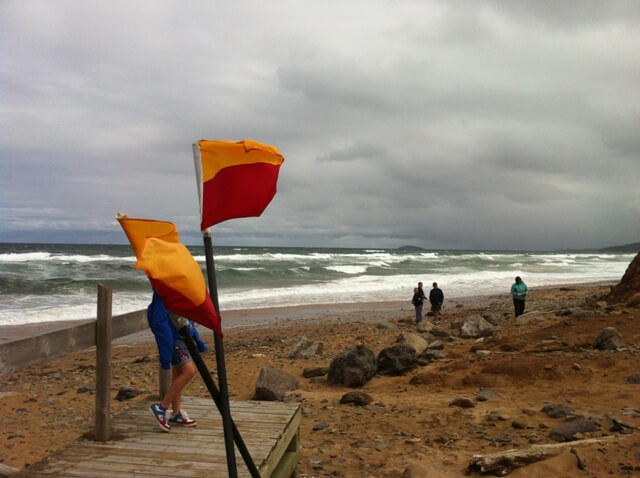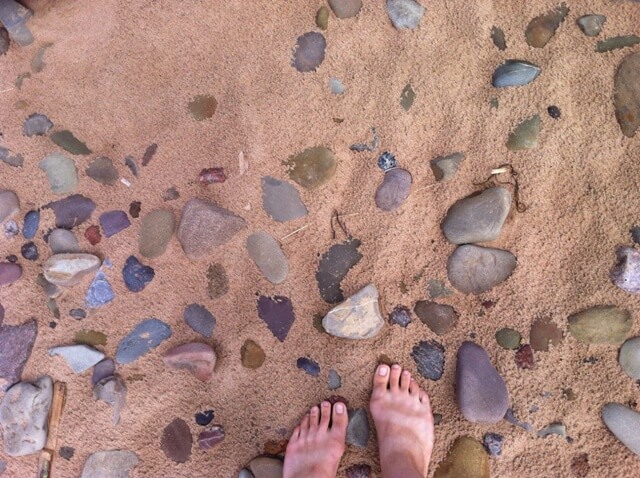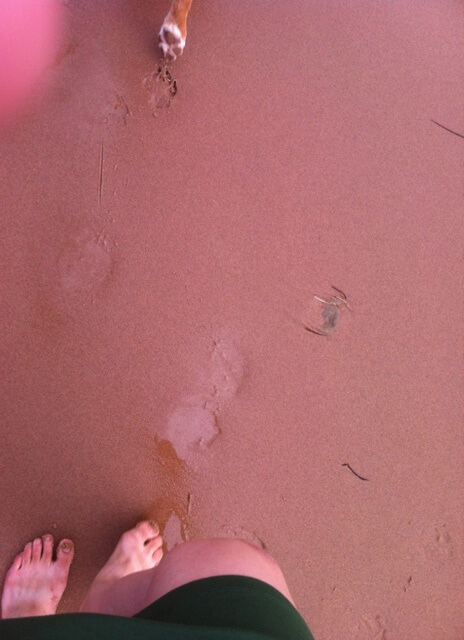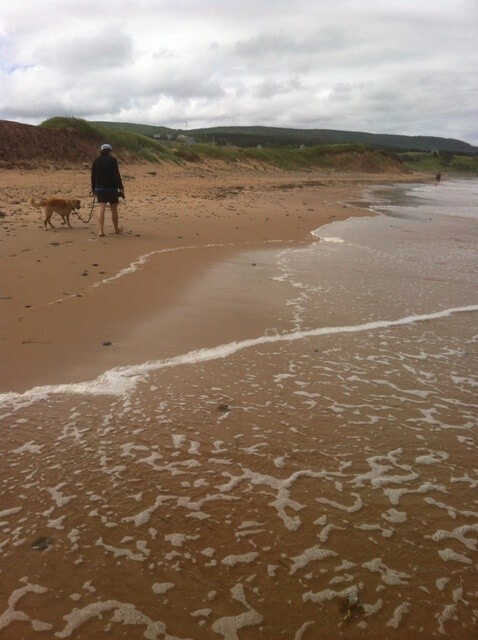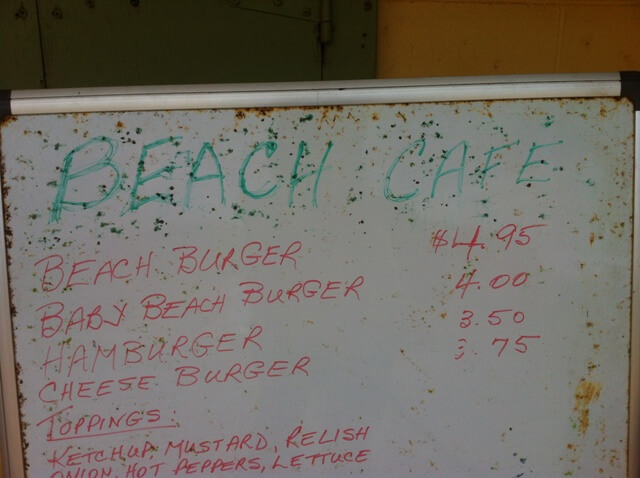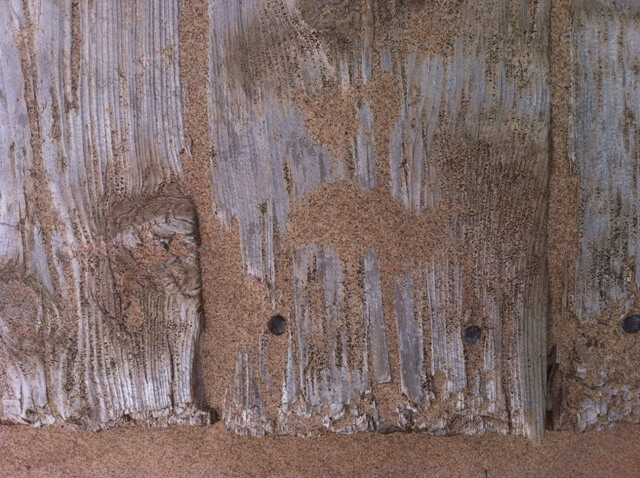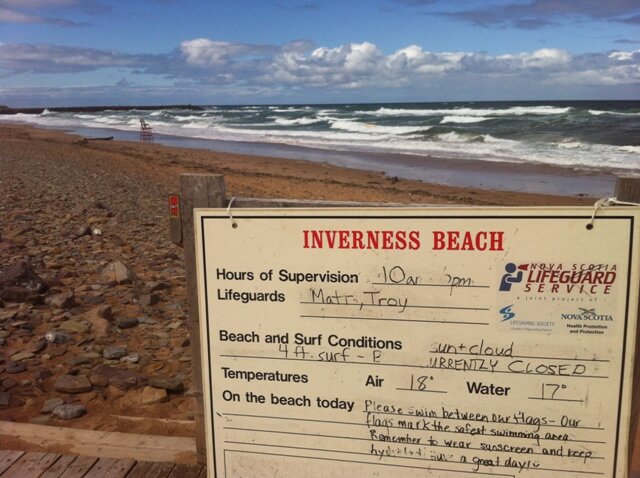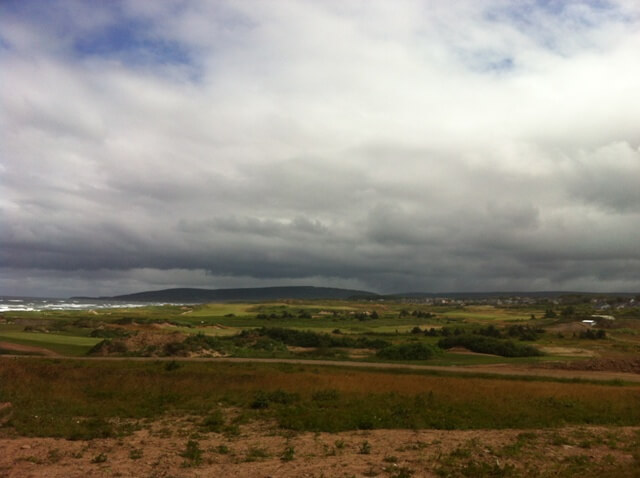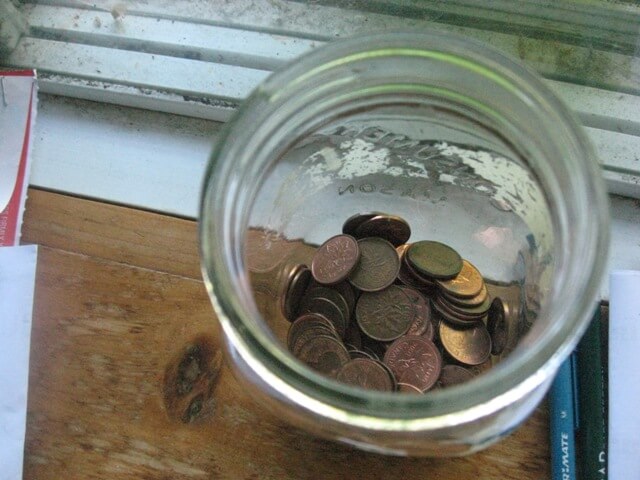It’s getting to be kind of funny, that every time I have a day off and have time to get to a beach, it’s overcast or raining.
Funny, or annoying, depending on whether I feel lighthearted or not.
Anyway, it feels pretty silly to be driving around in a bathing suit and beach dress on a rainy day, for sure. Kind of the definition of “false hope”.
So last week I decided I was going to check out Gabarus. I’ve never been there, so I was excited – a new part of the island to check out! There is something about travel that really gets my creative juices flowing, and travelling somewhere new especially. And checking out a new place on Cape Breton? The best!!
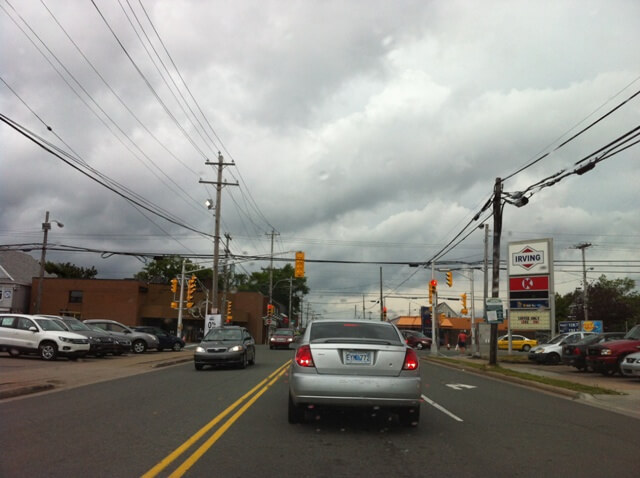
I had to head into downtown Sydney first, and as I was leaving the raindrops started. Bah! There went my hope that it might clear.
Out on the highway, the clouds still looked pretty ominous.
Stopped at the Alexandra Street roundabout for construction. I do love cranes. And construction – there’s something amazing to me about how we humans can actually organize ourselves to get this kind of thing DONE. Buildings on a big scale. Highway projects. Kinda neat.
So I drove through Marion Bridge and to the turnoff to Gabarus, and then decided to keep going, to check out Fourchu. I’ve been to St. Peter’s and Point Michaud a bunch, but never to that section of coast between Point Michaud and Louisbourg. Someday I’ll do the rest of it, and check out Framboise too.
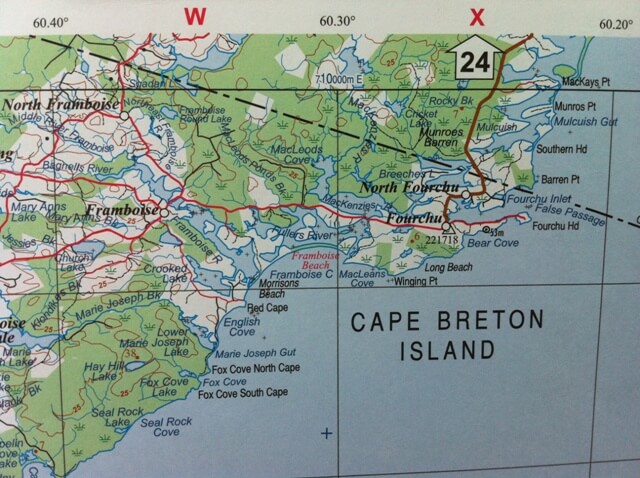

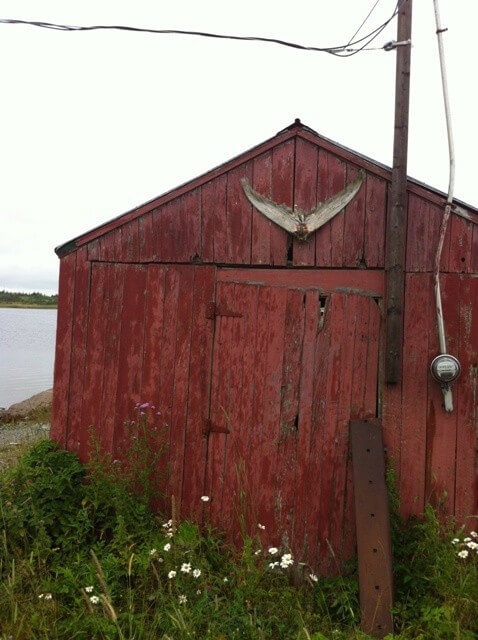
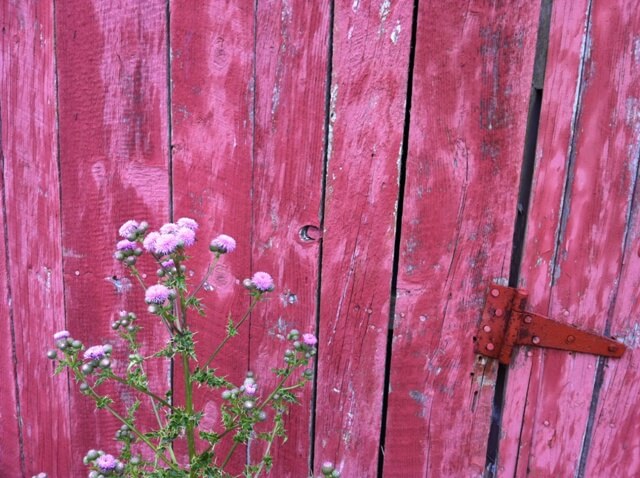
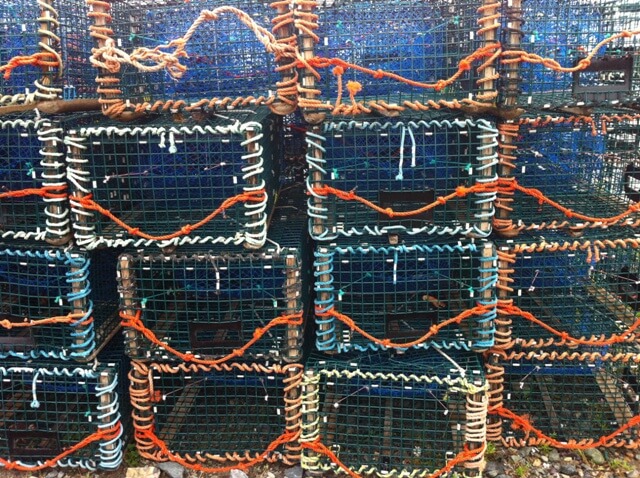
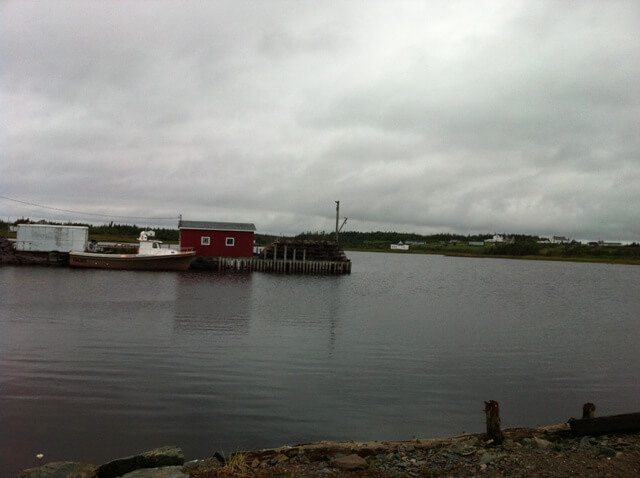 It was really quiet here. No-one around. Some birds hanging out and flitting by the roadside. The air was still.
It was really quiet here. No-one around. Some birds hanging out and flitting by the roadside. The air was still.
Bemused-face. Like, “what the heck am I doing here, hanging out on a rainy day in Fourchu near some fishing boats, in a bathing suit? I really am quite a dork.”

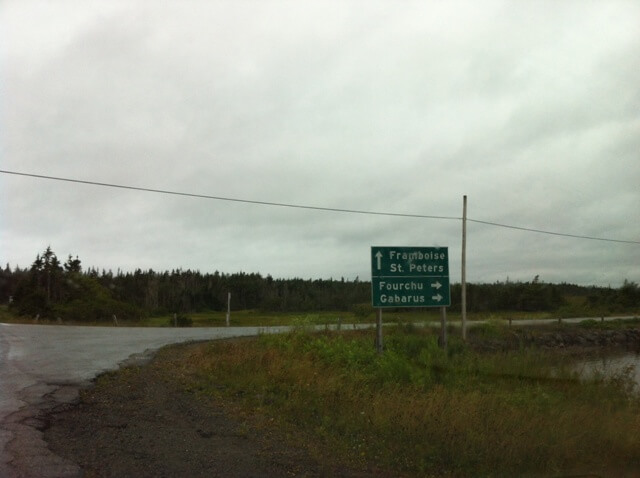 I went a little further towards Framboise, thinking there might be a beach to be found, but ended up stopping at a one-lane bridge to eat my lunch and turn around. Turned out it was right next to a seabird nesting area, so that was neat.
I went a little further towards Framboise, thinking there might be a beach to be found, but ended up stopping at a one-lane bridge to eat my lunch and turn around. Turned out it was right next to a seabird nesting area, so that was neat.
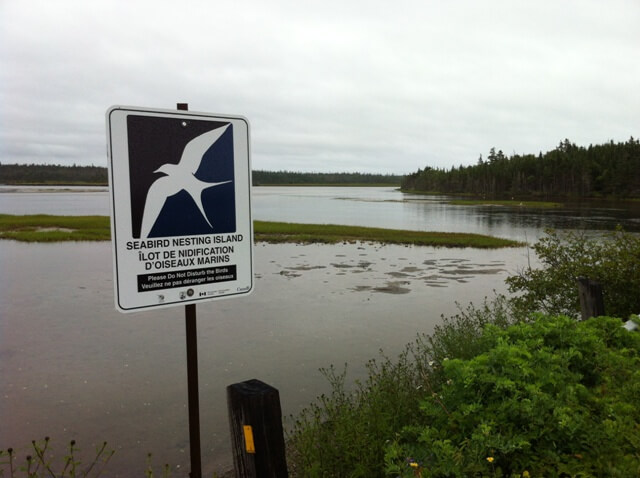
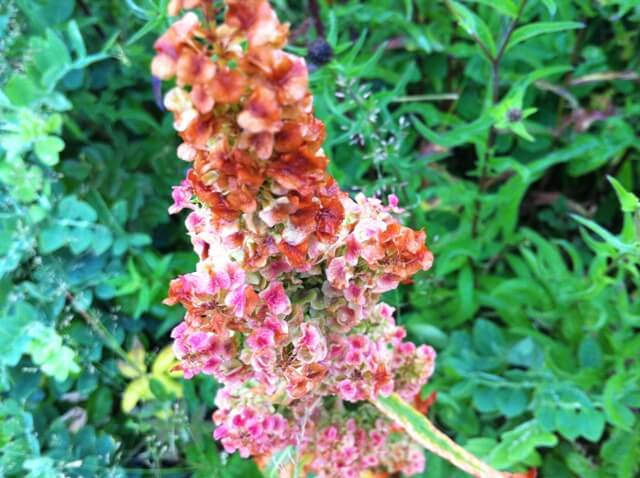 The ditches are so full of life this time of year! Greens, and other colours, and textures. Lovely.
The ditches are so full of life this time of year! Greens, and other colours, and textures. Lovely.
The irony of eating this sushi, fished lord knows where, by the Cape Breton seacoast wasn’t lost on me. But it was pretty tasty. (The sushi, not the irony.)
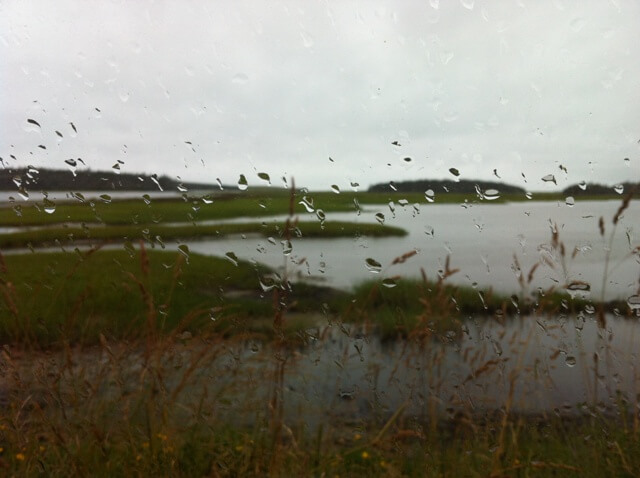
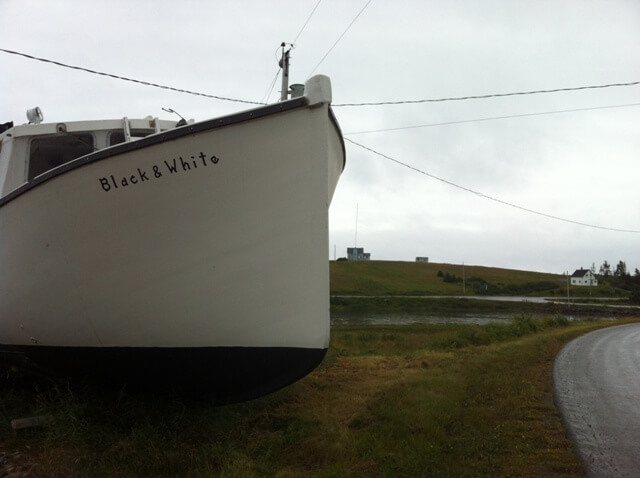


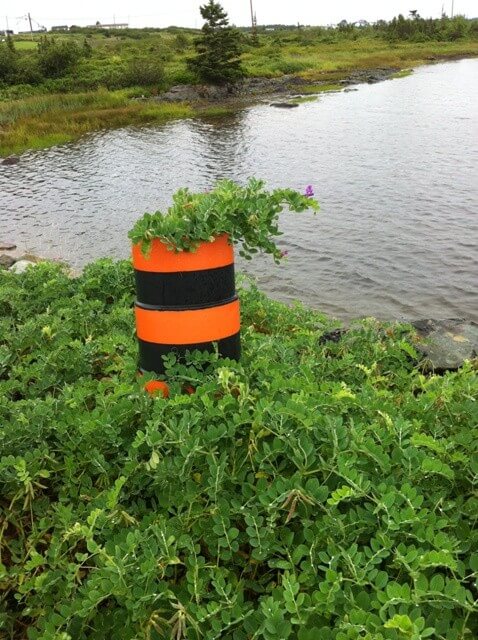
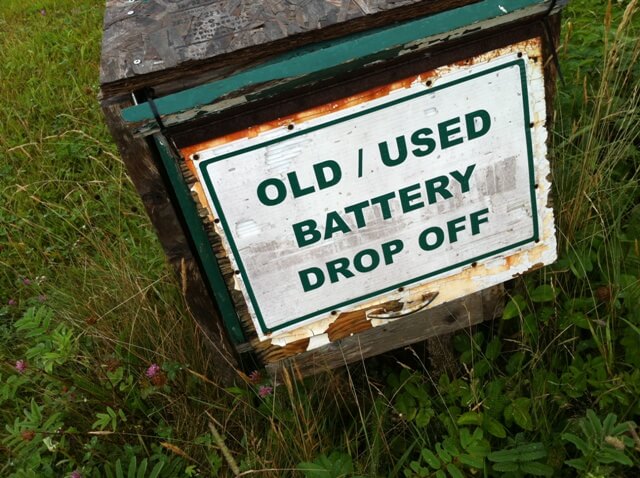
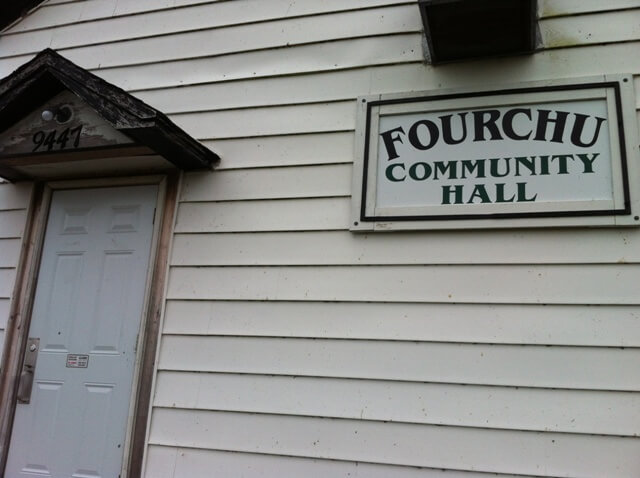
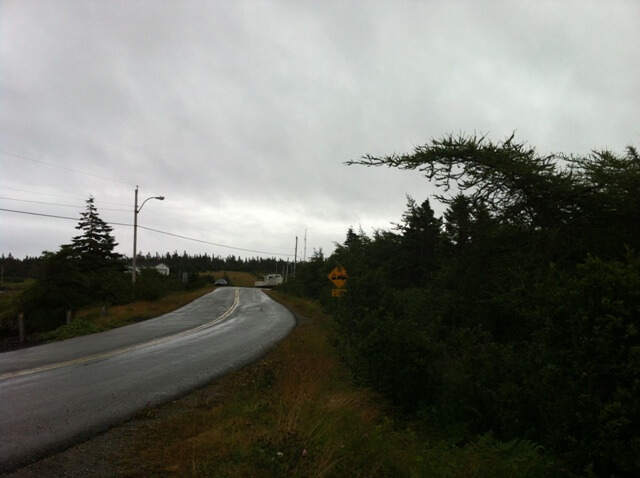
 That was enough of Fourchu. I wanted to start heading back and check out Gabarus. Someone had mentioned Belfry Beach at one point, so I went there first.
That was enough of Fourchu. I wanted to start heading back and check out Gabarus. Someone had mentioned Belfry Beach at one point, so I went there first.
Belfry Beach isn’t sandy, at least not the part where I was. It is covered in tiny pebbles. This was a little painful on my feet at times, depending on thes size of them. Nice and small= didn’t hurt. Kinda bigger= ouch!

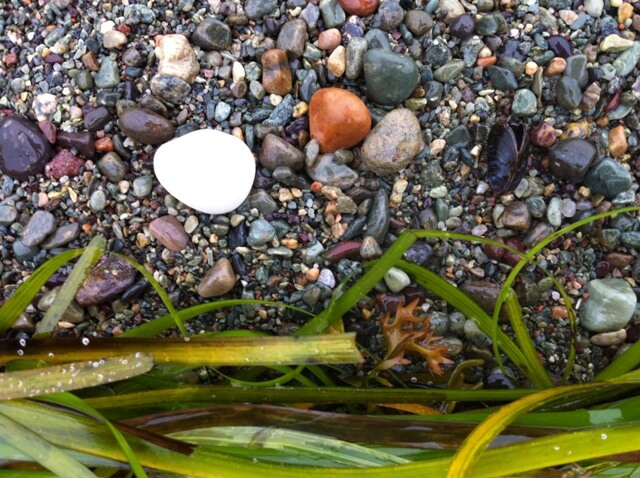
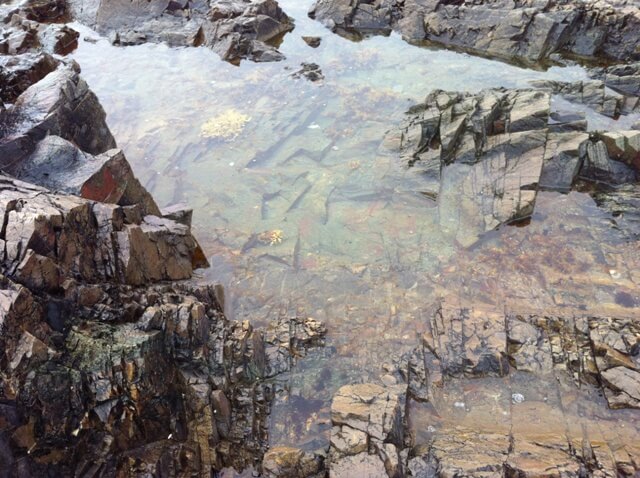
 This is probably my favorite shot of the whole day. The colours! The textures!The blue and yellow together!
This is probably my favorite shot of the whole day. The colours! The textures!The blue and yellow together!
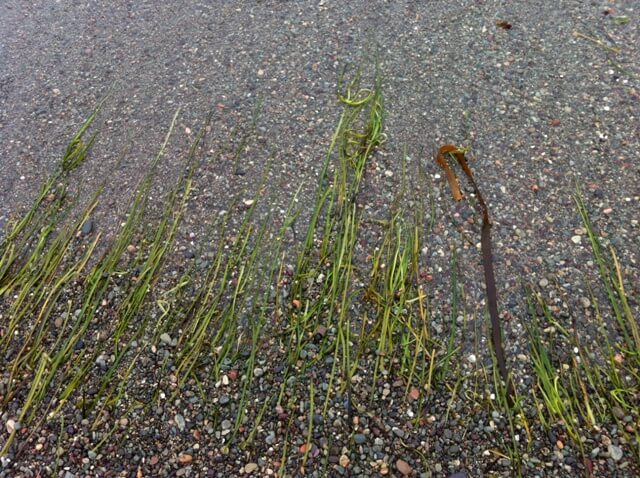
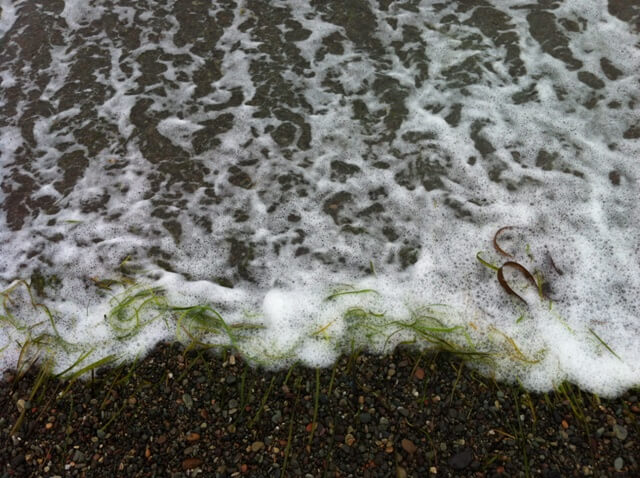
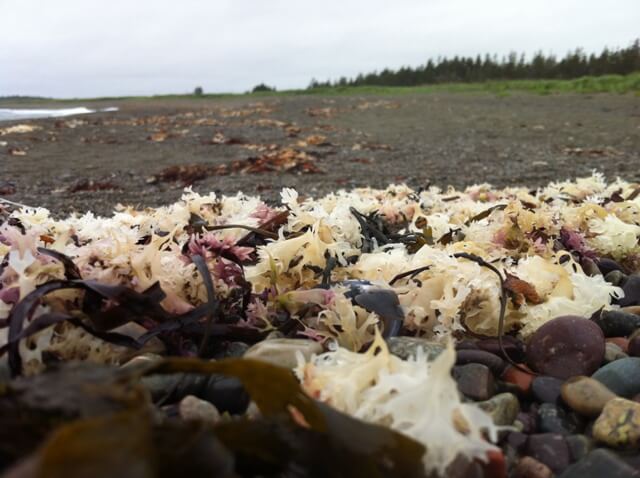 Irish Moss. You can make gelatin out of this stuff! Mum swears by a drink made with it, if she’s sick, because it’s got all kinds of minerals and things in it. I think it tastes like and has the consistency of snot, but… whatevs. To each their own!
Irish Moss. You can make gelatin out of this stuff! Mum swears by a drink made with it, if she’s sick, because it’s got all kinds of minerals and things in it. I think it tastes like and has the consistency of snot, but… whatevs. To each their own!
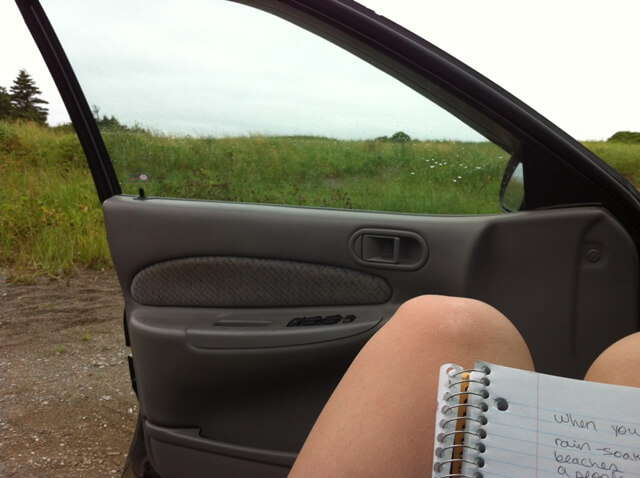 I sat in my car for a while, writing in my notebook. So relaxing. I could hear (but not see) the ocean. Just time all by myself to write, and think, and stare off into space. The best.
I sat in my car for a while, writing in my notebook. So relaxing. I could hear (but not see) the ocean. Just time all by myself to write, and think, and stare off into space. The best.
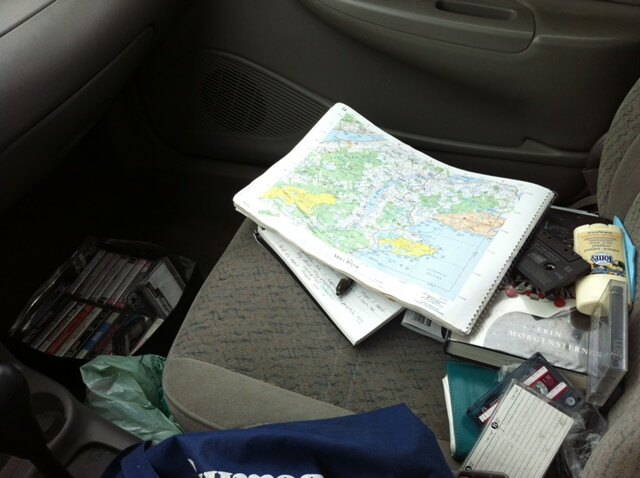 My touring-around necessities – The Nova Scotia Atlas. My cassette tapes (and the radio). My deodorant, I guess? (Well, it’s in the picture.) I took my book along but didn’t read it (that happens a lot). And my writing notebook (a Hilroy from the Drug Store).
My touring-around necessities – The Nova Scotia Atlas. My cassette tapes (and the radio). My deodorant, I guess? (Well, it’s in the picture.) I took my book along but didn’t read it (that happens a lot). And my writing notebook (a Hilroy from the Drug Store).
Then I went on to Gabarus, the community itself.
Up and over the seawall.
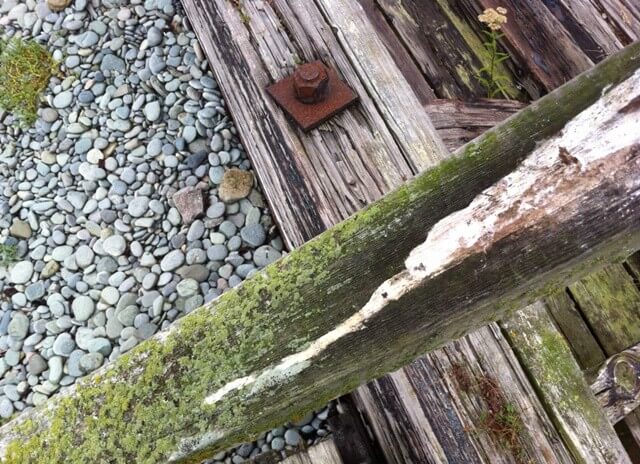
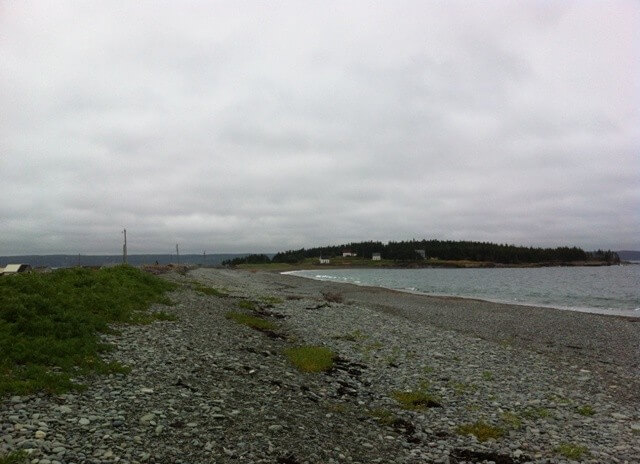
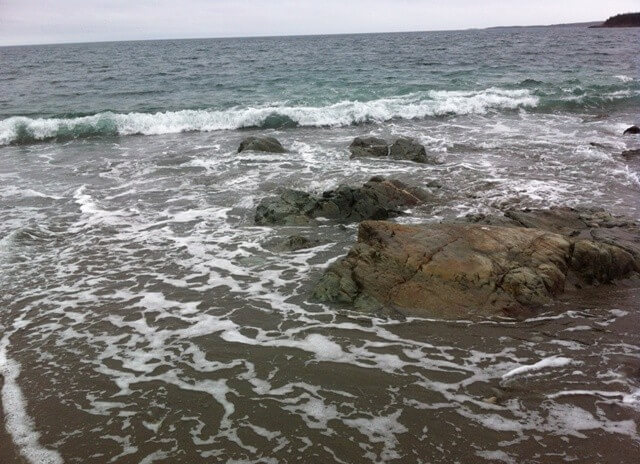 I just really love being by the ocean. The sound it makes, the constancy of it, the rhythm of the waves going in-and-out, the power, and how ancient the whole thing feels. My own day-to-day worries and the headaches of a little human life feel pretty small next to the ocean.
I just really love being by the ocean. The sound it makes, the constancy of it, the rhythm of the waves going in-and-out, the power, and how ancient the whole thing feels. My own day-to-day worries and the headaches of a little human life feel pretty small next to the ocean.
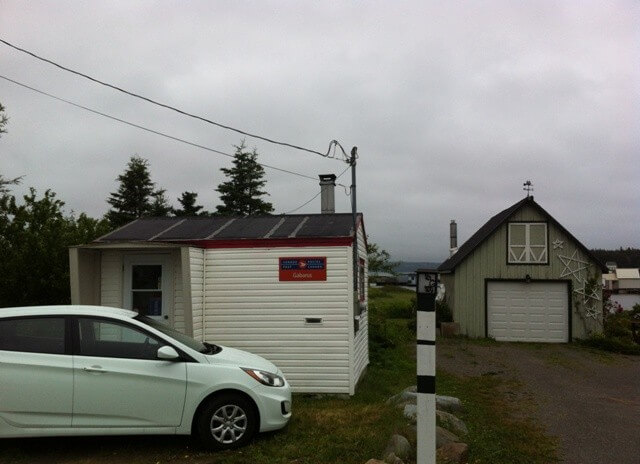 This is the Post Office in Gabarus. Adorable! A car is bigger than it!
This is the Post Office in Gabarus. Adorable! A car is bigger than it!
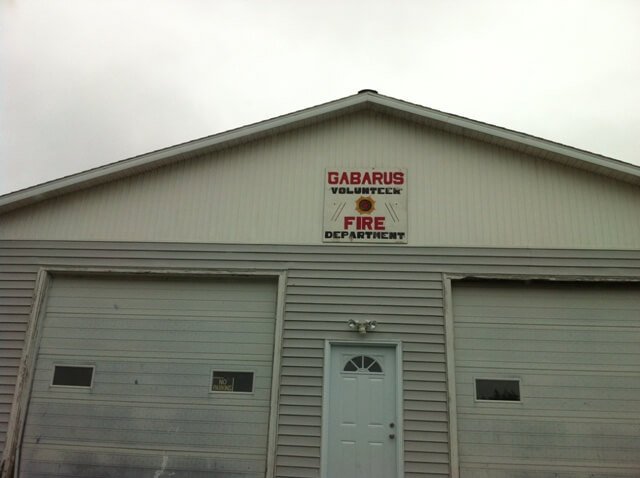
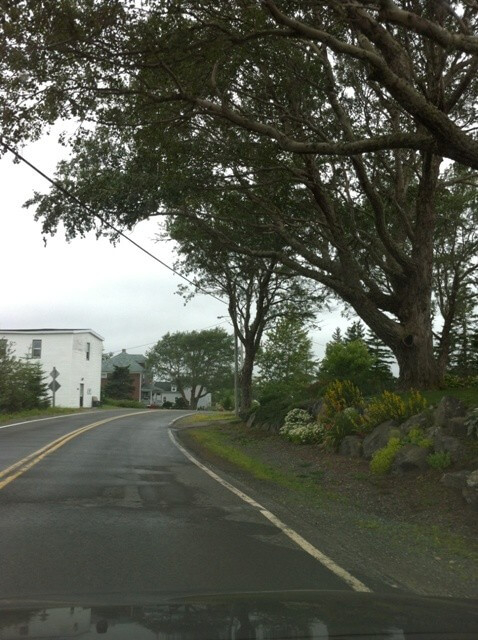 To take this shot I totally pulled a “tourist” move, one that drives me nuts here at home: I STOPPED THE CAR IN THE MIDDLE OF THE STREET, y’all. But, there wasn’t anyone behind me. So it was OK. Right?
To take this shot I totally pulled a “tourist” move, one that drives me nuts here at home: I STOPPED THE CAR IN THE MIDDLE OF THE STREET, y’all. But, there wasn’t anyone behind me. So it was OK. Right?
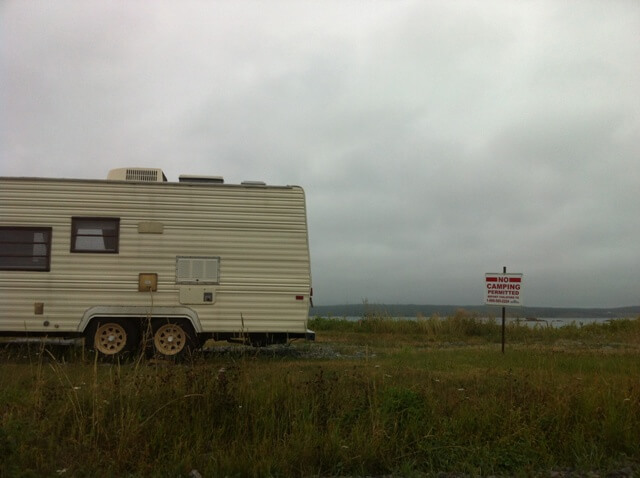 This just cracked me up. The sign says “No Camping Permitted.” And they camped right next to it.
This just cracked me up. The sign says “No Camping Permitted.” And they camped right next to it.
Here are a couple of interesting, Gabarus-related things I found:
- A video about the seawall, and the local folks’ efforts to have it replaced
- Neat info about the Gabarus Wilderness Area and why it’s so special
- Someone’s Philosophy PhD thesis about folklore in the Gabarus-Framboise region. Neat if you’re into reading theses!
To get there: Gabarus’s Belfry Beach is down the Belfry Road, which is off the Fourchu Road. To get to the seawall in Gabarus town, take Route 327 from Sydney to Gabarus and just drive to the end of ‘er. You will end at the seawall.
Curious about my 10 Beaches/2012 project? Basically, this summer, I’m challenging myself to make it to ten separate beaches on Cape Breton Island. So far: Initial post, Point Aconi, Chimney Corner & Inverness, Gabarus & Fourchu.

